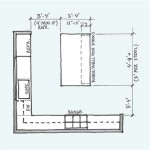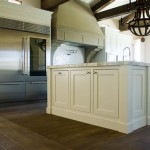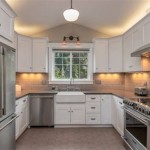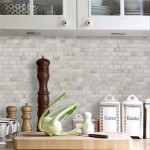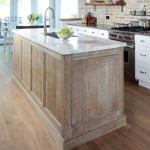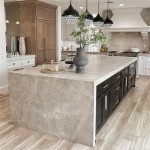French Country Pendant Lighting For Kitchens: A Comprehensive Guide
French Country design evokes a sense of rustic elegance, blending natural materials, soft colors, and charming details to create a warm and inviting atmosphere. Within this aesthetic, kitchen lighting plays a pivotal role, and French Country pendant lighting stands out as a particularly effective way to enhance both the functionality and the visual appeal of the space. This article explores the key characteristics of French Country pendant lights, considerations for selecting the right fixtures, and practical tips for incorporating them into a kitchen design.
Understanding the Essence of French Country Style
French Country design is inspired by the rural farmhouses of Provence. It favors natural materials such as wood, stone, and wrought iron, often in their unrefined or slightly distressed state. The color palette typically includes soft, muted tones like creamy whites, pale yellows, dusty blues, and lavender. Patterns are often floral or toile, contributing to the overall feeling of comfort and tradition. The goal is to create a space that feels lived-in, inviting, and subtly sophisticated, avoiding harsh contrasts or overly modern elements.
In the context of kitchen design, French Country style often incorporates features such as exposed beams, farmhouse sinks, open shelving, and a large central island. Lighting choices should complement these elements, reinforcing the overall aesthetic and contributing to the functionality of the workspace. Pendant lights, strategically placed, can serve both as task lighting for specific areas and as decorative accents that enhance the room's ambiance.
Key Characteristics of French Country Pendant Lighting
French Country pendant lights are distinguished by several defining characteristics that contribute to their distinctive look and feel. Understanding these characteristics is essential for selecting fixtures that align with the overall design vision.
Material Palette: A defining feature is the use of natural materials. Wrought iron is a common choice for the frame or structure of the pendant, often finished in a dark bronze, black, or distressed white. Wood, particularly reclaimed or aged wood, is another frequently used material, appearing in the form of beams, accents, or even the entire body of the pendant. Glass is also prevalent, often with a slightly antiqued or seeded texture to add visual interest and diffuse the light softly. Other possible materials include linen, burlap, and natural rope, used for shades or decorative elements.
Design Elements: Many French Country pendant lights incorporate elements that evoke a sense of history and craftsmanship. These may include scrolling details, fleur-de-lis motifs, and hand-painted accents. The shape of the pendant can also contribute to the overall aesthetic. Lantern-style pendants, with their cage-like designs, are a popular choice, as are pendants with bell-shaped or empire-shaped shades. The level of ornamentation can vary from simple and understated to more elaborate and ornate, depending on the desired level of formality.
Color and Finish: The color palette for French Country pendant lights typically aligns with the broader color scheme of the style. Muted tones such as creamy whites, soft beiges, and pale grays are common choices. Metals are often finished with an aged or distressed look, adding to the feeling of authenticity. For example, wrought iron may be intentionally rusted or painted to mimic the patina of age. The goal is to create a finish that feels both timeless and slightly imperfect, reflecting the rustic charm of the French countryside.
Light Quality: The quality of the light produced by the pendant is also an important consideration. French Country style generally favors warm, soft light that creates a cozy and inviting atmosphere. This can be achieved through the use of incandescent or LED bulbs with a warm color temperature (around 2700K to 3000K). Dimmers are also a valuable addition, allowing for adjustable light levels to suit different activities and moods.
Choosing the Right French Country Pendant Lights for Your Kitchen
Selecting the appropriate French Country pendant lights for a kitchen requires careful consideration of several factors, including the size of the space, the layout of the kitchen, and the desired level of illumination. The following points offer guidance on making informed choices.
Determine the Number and Size of Pendants: The number of pendants needed will depend on the size of the kitchen and the areas that require illumination. For a kitchen island, a general rule of thumb is to space pendants approximately 24 to 30 inches apart. The size of the pendants should be proportional to the size of the island; larger islands may require larger pendants or a greater number of smaller pendants. For general kitchen lighting, pendants can be strategically placed over countertops, sinks, and other work areas. In smaller kitchens, a single statement pendant may be sufficient.
Consider the Hanging Height: The hanging height of the pendant is crucial for both functionality and aesthetics. In general, pendants should be hung approximately 30 to 36 inches above a kitchen island or countertop. This allows for adequate task lighting without obstructing views or posing a safety hazard. Over a dining table, pendants can be hung slightly lower, approximately 28 to 34 inches above the table surface. Adjustable hanging chains or rods provide flexibility in determining the optimal height. It is essential to consider the height of the occupants and the specific use of the area when deciding on the hanging height. Experimenting with different heights before permanently installing the pendants can help to ensure the best results.
Match the Style to the Kitchen's Overall Aesthetic: Consistency in style is essential for creating a cohesive and harmonious kitchen design. When selecting French Country pendant lights, consider the existing elements in the kitchen, such as the cabinets, countertops, and backsplash. Choose pendants that complement these elements in terms of material, color, and design. For example, if the kitchen features white cabinets and a marble countertop, pendant lights with a white finish and a delicate design would be a suitable choice. If the kitchen has more rustic elements, such as exposed beams and a farmhouse sink, pendants with a wrought iron frame and a distressed finish would be more appropriate. Avoid mixing styles that clash, as this can create a jarring and unappealing effect.
Prioritize Functionality: While aesthetics are important, the primary function of kitchen lighting is to provide adequate illumination for food preparation, cooking, and other tasks. When selecting pendant lights, consider the type of light they produce and how well they will illuminate the desired areas. Pendants with clear glass shades or open designs provide more direct light, while pendants with fabric shades or frosted glass diffuse the light for a softer, more ambient effect. Adjustable spotlights or directional pendants can be used to focus light on specific areas, such as a cutting board or a stovetop. Consider the light output of the bulbs and whether dimmers are needed to control the brightness. Balancing functionality with aesthetics is key to creating a kitchen that is both beautiful and practical.
Layer Lighting for a Complete Effect: Pendant lights should be part of a layered lighting scheme that includes ambient, task, and accent lighting. Ambient lighting provides overall illumination for the kitchen, while task lighting focuses on specific work areas. Accent lighting is used to highlight architectural features or decorative elements. Recessed lighting can be used for ambient lighting, while under-cabinet lighting provides task lighting for countertops. Sconces or track lighting can be used for accent lighting. By combining different types of lighting, it is possible to create a well-lit and visually appealing kitchen that is suitable for a variety of activities.
Integrating French Country Pendant Lighting into Kitchen Design
The successful integration of French Country pendant lighting requires careful planning and attention to detail. Consider the following tips for incorporating these fixtures into a kitchen design:
Placement Above the Kitchen Island: The kitchen island is often the focal point of the kitchen, and pendant lights are an ideal way to highlight this area. When placing pendants above the island, consider the size and shape of the island, as well as the number of pendants needed. For a long, rectangular island, a row of evenly spaced pendants is a common choice. For a smaller, square island, a single pendant or a pair of smaller pendants may be sufficient. The pendants should be centered above the island and hung at the appropriate height. Consider the style of the island and choose pendants that complement its design. For example, if the island has a butcher block countertop, pendants with a wood frame or accents would be a natural choice.
Lighting Over the Sink: The sink is another important area in the kitchen that requires adequate lighting. A pendant light placed directly above the sink can provide functional lighting for washing dishes and other tasks. Choose a pendant that is durable and easy to clean, as it will be exposed to water and other liquids. Consider the style of the sink and choose a pendant that complements its design. For a farmhouse sink, a lantern-style pendant would be a fitting choice. Ensure that the pendant is hung at the appropriate height to provide adequate lighting without obstructing views or posing a safety hazard.
Highlighting a Breakfast Nook: If the kitchen includes a breakfast nook, pendant lights can be used to create a cozy and inviting atmosphere. A single pendant or a cluster of smaller pendants can be hung above the table to provide focused lighting for meals and conversations. Consider the size and shape of the table and choose pendants that are proportionally sized. Choose pendants with warm, soft light to create a relaxing ambiance. Consider the style of the breakfast nook and choose pendants that complement its design. For a more casual breakfast nook, pendants with fabric shades or natural materials would be a good choice.
Creating Visual Interest: Pendant lights can be used to add visual interest to the kitchen and create a focal point. Choose pendants with unique designs or interesting materials to draw the eye. Consider using pendants in different sizes or shapes to create a more dynamic effect. Mix and match different styles of pendants to add personality to the kitchen. Be careful not to overdo it, as too much visual complexity can be overwhelming. Focus on creating a balanced and harmonious design that is both visually appealing and functional.
By understanding the characteristics of French Country pendant lighting and carefully considering the practical aspects of kitchen design, it’s possible to create a kitchen that is both beautiful and functional, embodying the timeless charm and rustic elegance of the French countryside. With thoughtful planning and attention to detail, these fixtures can transform a kitchen into a welcoming and inviting space for cooking, dining, and gathering with family and friends.

15 French Country Kitchen Pendant Lighting Options What I M Using For Our Build My Chic Obsession

Kitchen Lighting Ideas To Enhance The Beauty Of Your Hub Decortrendy Com

1 Light Weathered Wood Cottage Rustic Wooden Chandelier French Country Kitchen Island

French Country Kitchen Mini Pendant Hand Sculpted Lighting New York By We Got Lites Houzz

6 Light Farmhouse Chandelier With Weathered White French Country Wood And Metal Ideal For Various Spaces

Secrets To Creating The Perfect French Country Kitchen

Wood Chandelier Vintage French Country Pendant Light Fixture White Lighting Home Ebay

The Gray Barn Modern Farmhouse 4 Light Wood Chandelier French Country Cylinder Island Pendant Lights N A

White French Chandeliers Kitchen

1 Light Distressed White Cottage Rustic Wooden Chandelier French Country Kitchen Island

